#accessibility and inclusivity
Explore tagged Tumblr posts
Text
#tiktok#blind#visually impaired#braille#mona lisa#inclusion#inclusivity#accessibility#disabled lives matter#disabled life#disabled#louvre#art museum#museum#louvre museum
96K notes
·
View notes
Text
Clinching First Time Visitors as Paying Customers
The difference between a new visitor to your website becoming a paying customer or going straight to your competition could be just a few well placed words. One of my favourite things is to find those words and suggest where they could go to prevent your advertising leads bouncing off your website because your UX didn’t navigate them through. By simply removing a misleading message in red…
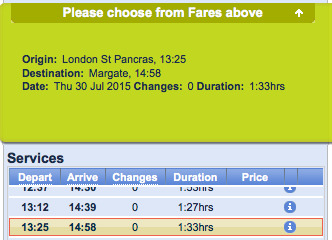
View On WordPress
#accessibility and inclusivity#accessible#advertising leads#communication is the root of accessible and inclusive websites#converting strangers into runners#expected information#Good UX design#inclusive#intuitive navigation#logins#new customer conversion#onboarding made easy#password prompts#routemap#runners and repeaters#show password#signposting new visitors#signposts#strangers and stranglers#test.io#testing#testing partners#UX and QA
0 notes
Text
I'm going to be incredibly honest right now: a part of me really hates June.
I love it as a queer nonbinary person, but I hate it as a disabled person.
I hate Pride events being inaccessible. I hate disabled people being excluded from conversations because people forget we can be not straight and/or not cis. I hate it being called Pride Month instead of LGBTQIA+ Pride Month because Disability Pride Month is literally next month (July).
#disability#disabled#disabilities#ableism#ableist#activism#activist#disability rights#disability activism#disabled activist#disabled community#disability community#physically disabled activist#wheelchair user#LGBTQIA+ pride month#pride month#queer#nonbinary#june#july#disability pride month#honesty#exclusion#inclusion matters#representation matters#accessibility
66 notes
·
View notes
Text
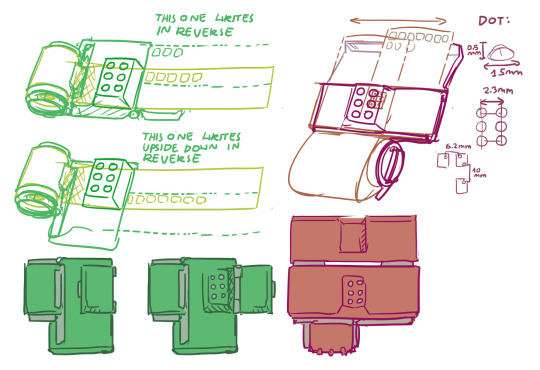
Please Reblog, I'd like to design a cheap braille typewriter (prototyping by 3d printing, final design will be machined) I stumbled upon linked YouTube short and a thought: "designing 6/8 button typewriter is within my technical capabilities"
youtube
I have many design questions I wish I could test out
My roadblock is I don't know anyone who's visually impaired, and casually seeking random place to peddle my soon-to-be-invention is not something I'm capable of
Many design questions:
Paper type: what is minimal quality/density of paper for dots to be readable. Can thermal receipt paper be used for notes?
Embossed vs punched out: is that significant for the typewriter to not break paper? It's important for "undo", but that's pretty far in my building a typewriter plan
Typewriter size: My initial idea was something like a portable cash register with receipt paper spool and little tray for it to glide along (I quickly realized it's a bad design because it can't fit more than 7 characters, or I can make infinite scroll of a single line with questionable ergonomics). Ultimately is related to page size, so what would be best for it? A4 standard paper? Is being portable important?
Keyboard layout: Perkins Brallier have all it's buttons inline forming long row. Wouldn't single-hand keyboard in similar layout as braille dots be more convenient? (straight grid or mimicking angle of computer keyboard letters)
Typing feedback: should typed letter be instantly accessible and not obstructed by typewriter? Maybe typing with one hand and instantly proof-reading with another hand?
Typewriter or printer?: alternatively, I can make a little annoying-noise-making servo-powered printer that will punch out text. Arduino or Raspberry PI based (I have experience with both) It would be USB powered most benevolent printer, because it don't require ink to work
Thanks for reading! [I'm not transcribing my design scribble, because it's absolute dogshit, but it helped me formula requirements. I will add transcription to actually thought of designs]
Alternatively, if I'm tweaking right now and if that thing would be needed it would already exist, I'll go back to trying to get hired by random megacorp and that's the last time you hear of me talking about it 💀
#braille#accessibility#inclusivity#blindness#blind#visually impaired#actually blind#low vision#visual impairment#Youtube
65 notes
·
View notes
Text
creatives, please use alt text
one of the first things i learned in journalism school was how to write alt image descriptions.
at first, it felt tedious. every single photo or graphic required a description, and if we skipped it—or wrote a lazy one—our professors didn’t hesitate to fail us. at the time, i didn’t fully understand why it mattered. but now, i’m so grateful they drilled it into us. if i’d never gone to journalism school, i might have never known how vital alt text is.
for those unfamiliar, alt text (short for “alternative text”) is a written description of an image. it allows people who use screen readers to know what’s in an image, making content accessible to those who are blind, visually impaired, or have other disabilities that prevent them from viewing images. you're basically translating visual content into words.
as creatives, whether we’re writers, artists, photographers, or meme page admins, we have a responsibility to make our work accessible. after all, what’s the point of creating something if a huge portion of your audience can’t engage with it?
why alt text matters
it ensures accessibility - a visually impaired person using a screen reader should be able to understand the context of an image just as easily as a sighted person.
it’s inclusive - adding alt text isn’t just for people with disabilities. sometimes, images don’t load due to bad internet, and alt text helps everyone understand what’s missing.
it’s good practice - if your work exists online, you want it to be as widely understood as possible. accessibility makes your content stronger.
okay, but how do i write alt text?
writing alt text isn’t as hard as it might seem! here are some tips:
be concise but descriptive - describe the essential elements of the image. what would someone need to know to get the gist of it?
include context - if the image is part of a larger story, explain its relevance. for example, “a black cat sitting on a pumpkin, used to illustrate a halloween-themed story.”
don’t overthink it - you don’t need to describe every pixel. just focus on the most important details.
alt text and ai tools
in the era of chatgpt and microsoft copilot, we’ve got a major advantage: ai tools can now generate alt text for you!
while these tools aren’t perfect and often need a bit of tweaking, they’re a great starting point. platforms like adobe, microsoft, and even some social media apps have built-in options for generating descriptions. if you’re overwhelmed by the idea of writing alt text from scratch, let ai do the heavy lifting, and then refine it.
a creative responsibility
alt text isn’t just for journalists or big companies, it’s for all of us.
as creatives, we have the power to make the internet a more inclusive place. whether you’re posting a masterpiece, a meme, or a picture of your cat, take a moment to add alt text.
adding alt image description is SO EASY and quick and we all need to get better at adding it to our posts. i, myself, am not perfect. on here, for example, i've been really bad about writing alt image descriptions, and it's something i'm very disappointed in myself for. (i hereby pledge to do better, and please call me out for lacking in the future!)
writing alt text is not only about respecting your audience, but it's also about recognizing disabled people's right to engage with your work.
accessibility isn’t optional !!
#alt text#accessibility#writing#writeblr#journalism#inclusivity#inclusion#altimage#screenreaders#onlinecreativity#writingcommunity#accessible art#art#disability awareness#web accessibility#artists on tumblr#disability rights
142 notes
·
View notes
Note
I just found your blog and I am absolutely enamored by all these designs! I did have a quick question though
I'd love to one day visit Japan, and I love the idea of attending a festival in a rented yukata. However, I'm concerned about if I could wear one or not due to the sleeves. I'm disabled and get around using forearm crutches, and have difficulty fitting larger sleeves in them.
I guess I was just curious about if either the sleeves could easily be pulled back to my elbows, or if maybe there are yukata with shorter sleeves (I've never seen them myself at least.)
Hi! I am so happy you fell in love with kimono fashion <3
As for your question, there is a fantastic way to accomodate your crutches: tasuki 襷 sleeves holders. Those are cord used for holding up sleeves out of the way (when doing chores, physical/messy activity, etc).
You can see below how tasuki are tied: basically think of an ∞ with the crossing on your back and the loop up front gathering up sleeves on your sides:
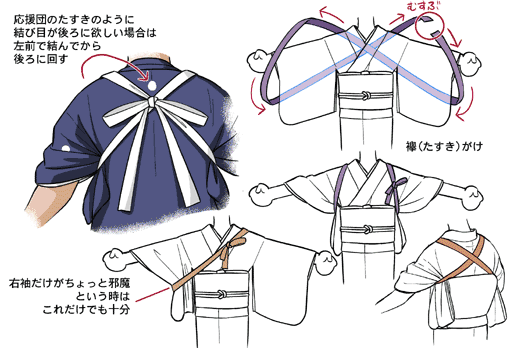
Depending on your mobility, you can pre-knot the cord beforehand then slip it around your body.
The "right" way of doing it is this one:
youtube
Though to be honest, most people do like this and call it a day xD:
I am not sure how your mobility is so I'll also add other options to mix and match in order to nicely enjoy summer festivals in kimono attire:
Happi 法被 (festival coat): if you don't feel confortable strolling all day/night in yukata (the tighness of around your legs might be cumbersome), wearing a coat like those over your "normal" clothes is a good option to still be in festival mood :) Some are sleeveless, some have tube sleeves, and if not pair them with tasuki sleeves holder and you'll be good to go!
(pic below from)
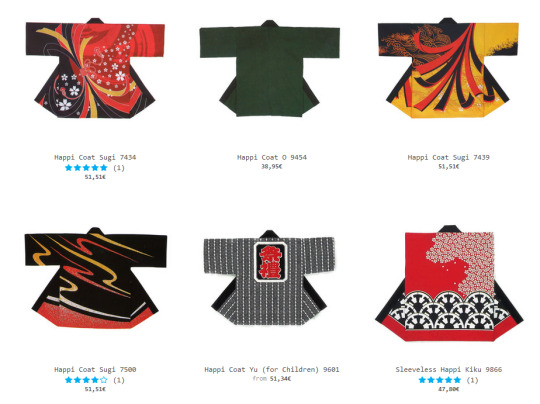
Nibushiki kimono 二部式着物 / nibushiki yukata 二部式浴衣 (two parts kimono/yukata): exactly what it says on the lid, those are kimono/yukata tailored in two parts, a skirt and a top one. Those might be harder to find in rentals, but have the convenience of being super easy to put on while being less prone to unraveling :) The two parts are also gentler on the figure as you can more easily adapt tighness etc. If you're are able to shop for a yukata beforehand, altering is pretty easy: chop in two, add ties and you're ready to get dressed ;)
youtube
Tsuke obi 作り帯 (two parts belt): in the same spirit as above, those are pre-tied obi belt, with a wrap-around part and a knot part. They are super common for children, but also exist for adult. Altering a pre owned obi is also super easy, see for example this past note (for nagoya obi styled taiko knot).
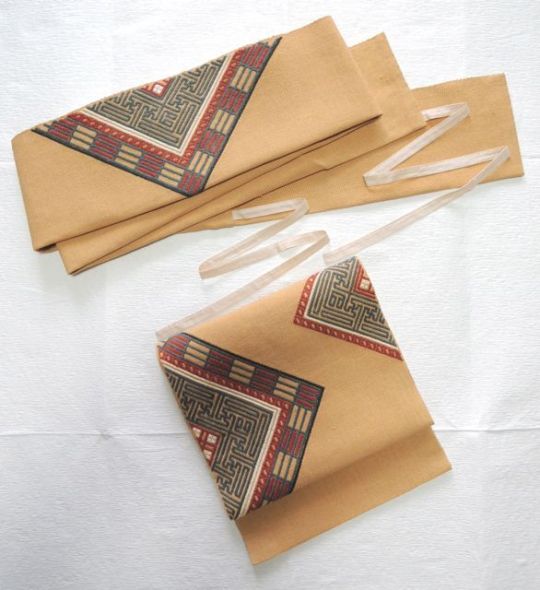
Yukata can be worn with hanhaba obi (half width belt), heko obi (soft belt), or kaku obi ("men" belt). Heko obi would be my recommendation as those are unisex, comfortable, and suuuuper easy to tie.

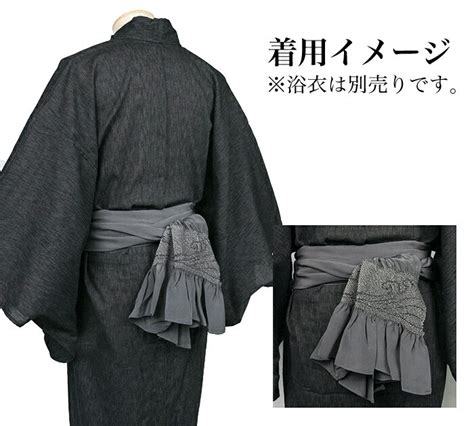
If you want to try hanhaba or kaku, I'd advise for karuta musubi, a flat, sturdy, and unisex knot pretty easy to tie.
youtube
Hope your travel project will come true and that you'll have fun :D
#ask#japan#fashion#matsuri#summer festival#inclusive fashion#accessibility#mobility#clutches#tasuki#sleeves holder#happi#happi coat#Nibushiki kimono#pre tied kimono#two parts kimono#tsuke obi#pre tied obi#two parts obi#heko obi#karuta musubi#disability#着物#帯#浴衣
283 notes
·
View notes
Text
Sara Nović for The Guardian:
Twelve days before Donald Trump took office, Charlie Kirk, media personality and rightwing activist, complained on his eponymous show about the presence of American Sign Language (ASL) interpreters at emergency press briefings for the Los Angeles fires. Another rightwing activist, Christopher Rufo, took his cue on X, calling interpreters “wild human gesticulators” who turned briefings into a “farce”. The rightwing theorist and Origins of Woke author Richard Hanania, quote-tweeting Rufo, declared ASL interpretation an “absurdity”. Around this time, Elon Musk was skulking around the platform, campaigning to bring back the R-word. Use of the slur tripled on X after his post. To those with less knowledge of disability history, these attacks might read as gross, but ultimately toothless. Activists, though, quickly sounded the alarm: the incoming administration would be coming for disabled people. “To the deaf community, the fight for accessibility is nothing new,” said Sara Miller, deaf educator and community advocate. However, Miller said she had seen a burgeoning movement against accessibility from conservatives with large platforms, including during the first Trump administration, when the National Association of the Deaf had to sue to have ASL interpreters during 2020 Covid briefings. “But when looking at the history of the first term of [the Trump] administration, and currently how diversity, equity, inclusion and accessibility (DEIA) is being targeted, it’s not hard to see the correlation.”
Manufacturing cultural outrage to justify policy that would have previously been considered too cruel or damaging is a staple of the far-right playbook: most recently, the US has seen the move used to bolster book bans and outlaw Black history and gender-affirming care. The play-by-play is always the same: social media followers take their marching orders, hurling discontent at the specified targets and regurgitating talking points. Eventually, the ideas become so ubiquitous they are adopted by politicians who use them to engage their base. Finally, the talking point becomes the policy itself, and politicians claim they have a mandate from the people to justify stripping away the rights of the marginalized. Fast forward to 21 January 2025, when the accessibility page and all ASL content were removed from the White House website. Then, real-life interpreters were removed from the White House and across multiple federal agencies whose accommodations divisions were dismantled under Trump’s anti-DEIA orders.
Alongside “diversity” and “women”, words like “accessibility” and “disability” have also been listed as grounds to flag or reject grant applications at the National Science Foundation, sparking concerns at other federal agencies and research institutions. And last week, the Department of Justice, which is charged with enforcing the Americans with Disabilities Act (ADA), began to rescind key guidance, justifying the move by suggesting that accessibility is the reason for cost-of-living increases. Simultaneously, disabled children’s right to education is under fire. On 20 March, Trump signed an executive order to dismantle the Department of Education. Earlier in March, secretary of education, Linda McMahon, laid off over 1,300 people – nearly half the department – eliminating seven regional offices, large swaths of the department’s office of civil rights, as well as parts of the office of special education and rehabilitative services, though she had previously said those programs wouldn’t be affected. Twenty-one attorneys general filed a suit over the layoffs, arguing they were “illegal and unconstitutional”.
The education department funds early intervention and post-high school transition programs, and organizations like the American Printing House for the Blind and the Special Olympics. It also enforces the Individuals with Disabilities Education Act, the law that gives disabled kids the right to a “free and appropriate public education”. A child’s needs and services are documented in a legally binding agreement known as an Individualized Education Program, providing services like speech, physical and occupational therapy, and the use of specialized curriculum. Accommodations like closed captions, ASL interpreters, ramps and elevator keys, braille materials, preferential seating, audio books, use of a laptop or notetaker, and movement breaks can also be included.
Without these plans, disabled students may be inside the classroom, but they will not be meaningfully educated. Now the director of the office of special education position is vacant.
[...] Leaving disabled people behind is not new to the American political landscape; the US has a history of eradicating the disabled. Eugenics – the pseudoscientific belief that humans should breed for “desirable traits” and suppress the undesirable ones – rose to popularity in the US and globally during the late 19th century.
The first eugenics-based law in the world was passed in the US: Indiana’s 1907 Act to Prevent the Procreation of Confirmed Criminals, Idiots, Imbeciles and Rapists targeted disabled people in state schools and institutions and incarcerated people by mandating sterilization for “criminals, idiots, rapists and imbeciles in state custody”. The Nazis would go on to praise the US’s codified eugenics and racism in their 1934 handbook. In Germany, the convergence of two mass-disabling events – the Spanish flu pandemic and the first world war – wreaked economic strife, the rationing of food and medicine, and overcrowding in institutions and long-term hospitals. Calls from the German eugenicists to stamp out what they called “life unworthy of life” began in the 1920s, even before Hitler came to power.
By 1933, the magazine Volk und Rasse was publishing a variety of eugenics propaganda, including a political cartoon featuring images of large moneybags labeled “a slow learner”, “the educable mentally ill”, and “blind or deaf-born schoolchildren” bore the caption: “This illustration depicts the burden of maintaining the socially unfit.” That same year, a law called for compulsory sterilization of those with “hereditary diseases” including deafness, blindness, schizophrenia, epilepsy, bipolar disorder, chronic alcoholism and a host of other conditions. A 1935 expansion of the law required mandatory abortions on the fetus of a parent with one of the listed conditions. Approximately 400,000 disabled people were sterilized in Germany and annexed territories during this period.
More extensive propaganda campaigns declaring disabled people as “useless eaters” were launched through various media in Germany. The arts, including in literature, documentaries and narrative film, posed a solution: mercy killings. As Mark P Mostert outlines in his 2002 article “Useless Eaters,” one particularly popular 1941 movie, I Accuse, caused a spike in the belief that euthanasia was an act of kindness toward disabled people. In the film, a a man euthanizes his beautiful, disabled wife as an act of love, asking the court: “Would you, if you were a cripple, want to vegetate forever?” The court acquits; the movie’s final scenes declare “love is medicine”. Support for euthanasia among Germans exploded, writes Mostert, and the first disabled people were euthanized at the behest of their families, who had bought the party line that killing their loved ones would be an act of grace. In 1939, Hitler created an advisory committee to oversee the state’s first official program for the killing of disabled children, whose murders began en masse that year.
The program quickly expanded to encompass multiple killing sites, as well as disabled adults across German territories, through the program Aktion T4. The Nazi gas chambers were perfected using disabled people. There, officials first created the cover story that “patients” were being sent to take a shower, where they were poisoned with carbon monoxide gas and sent to crematoriums. When carbon monoxide proved too slow, the methodology for gassing via cyanide-based Zyklon B was tested and fine-tuned on disabled people.
The Guardian has a well-done article on the Trump Administration (and right-wing media)'s war on disability rights.
#Disability Rights#Disabilties#Ableism#Trump Administration II#Sara Nović#Elon Musk#Charlie Kirk#Christopher Rufo#Richard Hanania#American Sign Language#ASL#DEIA#Diversity Equity Inclusion and Accessibility#Americans With Disabilities Act#People With Disabilities#Eugenics#Special Education
48 notes
·
View notes
Text
Your business is in fact, not accessible, when there are stairs leading to your bathrooms, no matter how step free your front door is.
#inclusion matters#the future is accessible#accessibility#disabled#disabled community#cripple punk#disability awareness#disability advocacy
630 notes
·
View notes
Text

In the 1990s, game designer Kenji Eno learned of blind fans who played his visually rich games with great effort. In response, he created "Real Sound: Kaze no Regret," an audio-based game accessible to both sighted and blind players. He partnered with Sega to donate 1,000 Sega Saturn consoles with the game to blind individuals, promoting inclusivity in gaming.
#Kenji Eno#Real Sound#Kaze no Regret#Sega#blind gamers#accessibility#audio game#inclusive gaming#1990s#video games#heartwarming
74 notes
·
View notes
Text
🔴LIVE: SPECTRUM PUBLIC ACCESS

This 24hr live stream celebrates the weird and wonderful creativity of the autism and neurodivergent community, showcasing innovative films, video art, and stories by neurodivergent filmmakers.
The stream encapsulates 15+ years of creations from Spectrum Productions, featuring the work of over 150 different autistic and neurodivergent artists.

Want your work to be featured on a future stream? Check out the link in the stream description. No idea is too small!
Thanks for watching and keep being creative! :D
#Spectrum Public Access#autism#neurodivergent#autism awareness#actually autistic#neurodiversity#autistic artist#actually neurodiverse#neurodivergent artist#live stream#video art#short film#animation#meme#autistic things#artist on youtube#autistic filmmaker#neurodiverse stuff#neurodivergent filmmaker#Spectrum Productions#cartoon#filmmaking#inclusion#original animation#original film#2d animation#creativity#experimental#experimental art#experimental video
45 notes
·
View notes
Text
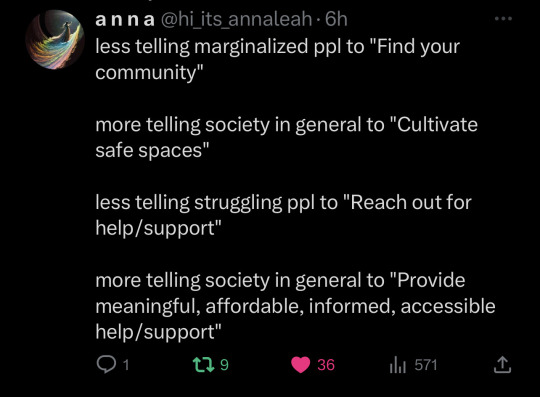
[Alt text from image]
Screenshot of tweet from user @/hi_its_annaleah here :
less telling marginalized ppl to "Find your community"
more telling society in general to "Cultivate safe spaces"
less telling struggling ppl to "Reach out for help/support"
more telling society in general to "Provide meaningful, affordable, informed, accessible help/support"
#important psa#support system#disability#marginalized people#chronic illness#chronic pain#invisible illness#accessibility#inclusivity
440 notes
·
View notes
Text
A lot of leftist accounts are posting about not buying PSLs from Starbucks due to their support for corporate greed and genocide in Gaza. They suggest buying from local coffee shops instead.
However, as I have to keep doing literally every time something goes round about anti capitalist action by using local cafes and bars, I must remind people that *if* they are accessible enough for me to physically get into them, then I absolutely will.
However, if you see a disabled person using a large chain, the odds are it’s because every other place that sold whatever it is they need they physically cannot get into, and, if they can, they certainly cannot pee in them, and not because they support genocide or corporate greed.
Disabled folk may in fact be *forced* to use such places if they need to be out and about because nowhere else has a disabled bathroom to use, including for changing a stoma bag or pad, or because they *need* to eat or drink to take essential medication and there is nowhere else they can physically get in to do so.
If you are an abled person who genuinely believes in accessible, inclusive public spaces, please a) consider this fact when choosing where to hold events, and b) put pressure on inaccessible independent bars and cafes you love to increase their accessibility. Offer to contribute to a crowdfunding campaign, or indeed to run one, if they say that costs prevents them becoming more accessible.
Disabled people are part of every local community on the planet and measures that “support your local community” while excluding us from participation in it do not, in fact, do so. They just increase the exclusion of marginalised people from local communities. Abled people have more energy and money to tackle this fact than we do.
#disabled#disability#chronic illness#disableism#chronic pain#chronic fatigue#ableism#accessibility#inaccessibility#inclusion
60 notes
·
View notes
Text
i knwo im sleep deprived as hell because i just had a sudden conviction to invent a distinction between smps-in-videos and smps-as-played-by-real-people a la c! and cc! distinction. i think if we are going to keep using c! and cc! we should also do the same to our entire concept of "the server"
#peter posts#my pinned post contains 'and this is NOT a manic state' for areason.#like it's literally like how books don't exist. i mean to say that there is no such thing as A book unless it is instantiated#and a server is a text in the way that all geography is a text (the most instantiated of texts) esp when inclusive of accumulative time#therefore. we really ought to stop considering “servers” as existing accessible to fans when speaking of it any context outside the actual#copies accessible through the specific data - but nobody in fandom ever means 'the server' in that sense. bc that is not EVER#a relevant instantiation of the text. am i making sense. i assume not
102 notes
·
View notes
Note
"Disney is making changes to its DEI (Diversity, Equity, and Inclusion) efforts. The studio is closing down the Reimagine Tomorrow initiative that helped highlight stories and talent from underrepresented communities. The studio is also removing the content advisory disclaimers that appears on certain projects on Disney+, like ‘Peter Pan’ and ‘Dumbo’, to the details section" wtf
hey so it looks like you sent this to the wrong blog? did you mean to send it to @fandomshatepeopleofcolor??
BUT here's what I got when i plugged in that quote
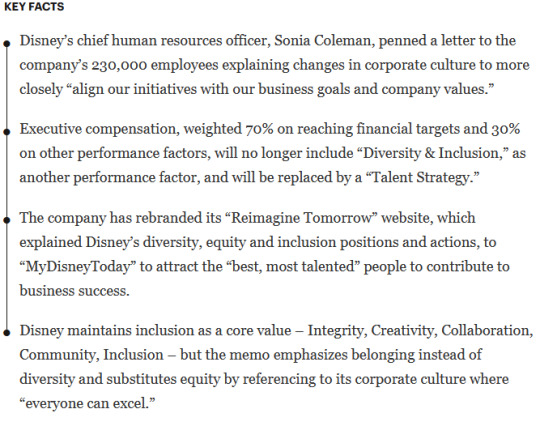
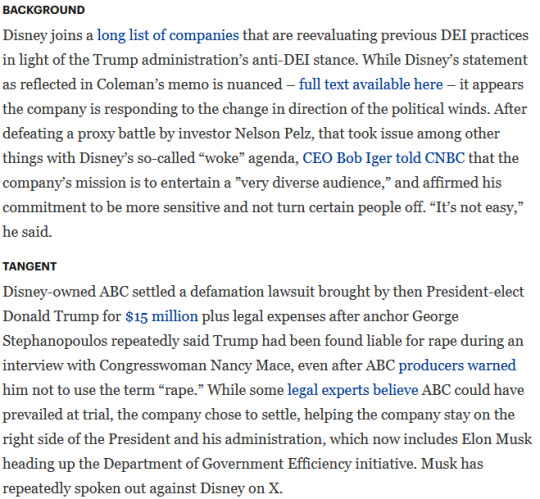

there's alt text too!!!
thanks nonny!
mod ali
#Anonymous#disney#disney plus#disney movies#diversity equity and inclusion#accessibility#47#trump 47#forbes#reuters#marvel#star wars#mcu
35 notes
·
View notes
Text






Things that make me happy in Melbourne (feat. cow in tree)
#accessible#accessibility#accesible toilets#changing places#unisex bathroom#all gender bathroom#audhd#autism#nd#neurodiversity#neurodivergent#chronic illness#chronically ill#postural orthostatic tachycardia syndrome#pots#disability#cripple punk#assistance dog#service dog#guide dog#inclusion#disabled#disabilties#wheelchair#wheelchair user#part time wheelchair user#Nonbinary#trans#transgender#lgbt
89 notes
·
View notes
Text
I follow tons of disability/chronic illness/mental health tags and I keep seeing memes or infographics without alt text or image IDs. This is not okay for content of any subject matter, but its beyond ridiculous for these spaces in particular. You can’t call yourself an advocate if you are declining to use accessibility tools like this. There are absolutely no excuses, especially with the technologies we have now. Most devices can read and copy the text out of any image, for example.
Basically if it’s not worth including everyone, it’s not worth posting. Make it accessible or don’t post it. Thank you
#accessibility tools#disability accessibility#disability advocacy#alt text#image id#text id#screen readers#disability accommodations#neurological disability#physical disability#invisible disability#vision impaired#sight impaired#blindness#accessibility#inclusivity#disability rights#disability community#disabled community#chronic illness community#disability vent#chronic illness vent#neurodiversity#disability problems#disabled rights#disabled things#queer disabled#disability representation#accommodations#disabled representation
76 notes
·
View notes